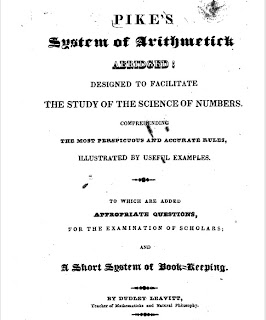 |
Trautvetter, H.G, Dan Patch Two-Step. Minneapolis, MN, n.d.. (part); digital image;
Mississippi State University-Charles Templeton Sheet Music Collection.
(http://digital.library.msstate.edu), 14 March 2013. |
This is a post that starts out with a musical piece written about a race horse. It seems that some of the most intriguing pieces of genealogical information start out in what are apparently non-genealogical pieces of ephemera.
It is not often that one runs across the Trautvetter name. The last name is fairly unusual and while there are a smattering of German immigrants to the United States with this last name, one always wonders if the person is somehow related.
 |
| Dan Patch Two-Step, page 1 |
My curiosity was piqued when I discovered this musical piece written by H. G. Trautvetter.
The "Dan Patch Two-Step" composition contains no specific date of publication. It only indicates that the publisher was the International Stock Food Company in Minneapolis, Minnesota.
Additionally, there is no clue as to the identity of H. G. Trautvetter--only the fact that he was the composer of the piece.
I really doubted that Trautvetter worked for the International Stock Food Company and assumed that he was somehow contracted just to write this one composition.
 |
| Dan Patch Two-Step, page 1. |
So Who Was H. G. Trautvetter?
A search of GoogleBooks provided a potential reference to H. G.Trautvetter in an item that potentially refers to the H. G. in question. A 1914 item in a Rotary magazine mentions an H. G. Trautvetter of the Peoria, Illinois, area, putting a poem to music. While this might not be the H. G. who wrote the "horse music," the coincidence of the name and the musical ability seems to be more than just that.
 |
| Ray, Rowan, "Peoria Plays Host to the Illinois Fellowship of Rotary," The Rotarian, Vol. 5, No. 1, July 1914 p. 45; digital image, GoogleBooks (http://books.google.com). |
A biography of Herman Gustave Trautvetter seems to indicate that the Peoria resident is the H. G. who wrote the "horse music." Born in 1873, Trautvetter studied music in Peoria and later began studying in Chicago when he turned twenty. The biography does not mention how long Trautvetter lived in Chicago, but it does indicate that he did compose and publish a number of compositions. At some point, he returned to Peoria, decided music was not lucrative and entered the collection business. Source: Rice, James M. Peoria City and County, Illinois: A Record of Settlement, Organization, Progress and Achievement. Chicago: S.J. Clarke, 1912, p. 350; digital image, GoogleBooks, (http://books.google.com), accessed 14 March 2013.
Trautvetter even wrote an article on bill collecting which appeared in The Rotarian as well.
 |
| Trautvetter, H. G, "Collecting Those Bills," The Rotarian-, Vol. 6, No. 3, March 1915 p. 59; digital image, GoogleBooks (http://books.google.com). |
H. G. Trautvetter was the son of a Christian Trautvetter, a German immigrant who settled in Peoria, Illinois. At this point, I'm reasonably certain I know who wrote the piece on Dan Patch. Determining what relationship this Christian Trautvetter has to my own Trautvetter family will have to wait for another day.





























